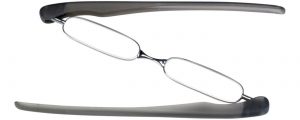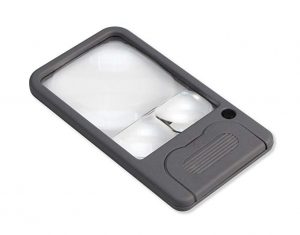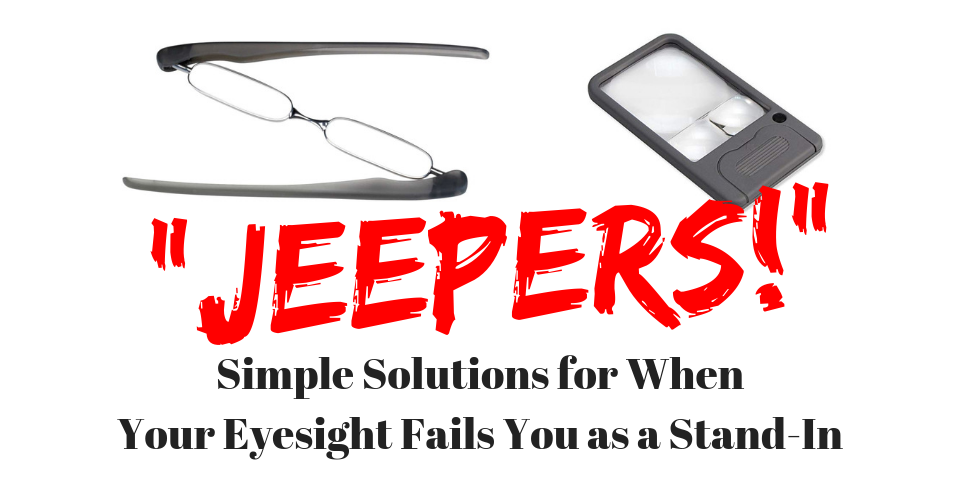If you are a stand-in and you wear glasses, you are a lot luckier than those stand-ins who don’t wear glasses but are suddenly faced with compromised vision.
You see, you have glasses, but those other stand-ins do not.
This can mean that you can see things that other stand-ins without glasses can’t! And if you’ve ever stood in on a set that prints out its callsheets in teeny-tiny print, you know that you’re the one being asked what the callsheet says because you have the prescription that aids you.
This post is for those stand-ins who don’t have glasses and are suddenly faced with impaired vision. Maybe the calllsheet is too tiny to read. Maybe the set is too dark for reading. Maybe you’re in your 40s and you’re becoming presbyopic (losing your near vision).
What’s a stand-in to do?
Here are some simple solutions for when your eyesights fails you as a stand-in.
Use Your Smartphone
If you carry a smartphone — and chances are, you do — you know your smartphone is like a very expensive Swiss army knife. Not only can it deliver and send email and texts, but it also can send images and help you out in the dark.
If your smartphone has a camera, then it has two features that will come in very handy when you can’t read your sides or the callsheet on set. Those features are the pinch-zoom feature and a flash. And if it has a flash, chances are it also has a flashlight.
When you are standing in the dark and you need to read, turning on the flashlight on your smartphone will give you much needed reading light. So many sets are dark, so this flashlight can be a real lifesaver. It even helps when navigating through the ever-changing serpentine paths of equipment, set decoration, etc., that carry you to the set — or to craft services.
The pinch-zoom feature on the camera can help give you the ability to zoom in on the smartphone camera’s image, thus creating a zoom effect to help you read better. Simply turn on your camera, point it at what you’re reading, and zoom in closer. This should help you to read things like sides and the callsheet better. Even better, you can couple it with the flash or flashlight for better reading!
Take a Photo
The above advice is for live viewing. However, live viewing might drain your smartphone battery quickly, so it might serve you better to take a photo of your sides or callsheet if you need help reading them.
When you take a photo, make sure you use a flash if you are doing it on a dark set. Then, after you take the photo of the document, view the photo, and pinch-zoom on the image in order to examine it more closely. This may not be very practical advice for sides, but for callsheets, it really helps. Plus, you can store past callsheets on your smartphone for reference if you need.
However, note that you probably don’t want to get into any kind of situation where production might think you’re compromising the confidentiality of the shoot’s information, like dialogue, storylines, etc. So be careful in taking photos of production materials and storing them on your smartphone.
Carry Reading Glasses
If you don’t wear glasses, the prospect of bringing reading glasses to stand-in work may seem a bit obnoxious. For one, you can’t wear them all of the time because they are for reading, and plus, you might be required by your job not to wear glasses while production sets up a shot around you.
If the idea of carrying around reading glasses causes you pain, there are a number of different kinds of reading glasses that may help you out.
 My personal choice are the Panini II Slim Travel Readers by Jeepers. These readers have a unique design where the arms fold over the slim lenses, making for a very compact and functional design that fits in your pocket without any bulk.
My personal choice are the Panini II Slim Travel Readers by Jeepers. These readers have a unique design where the arms fold over the slim lenses, making for a very compact and functional design that fits in your pocket without any bulk.
Of course, there are a lot of additional designs which solve carrying issues well when you are working on set.
- Clics makes reading glasses that click together at the nose and can store by hanging from your neck when not in use (as worn by some cinematographers!)
- ThinOptics makes credit card-sized readers that unfold and simply rest on the bridge of your nose, for storage on the back of a smartphone; another version can even fold into a holder on a keychain
- For easy storage, there are reading glasses with a carrying case that includes a clip
- There are even folding reading glasses that fold down into the size of about one lens
Carry a Magnifier
Another solution is carrying a magnifier. A magnifier can be a Sherlock Holmes-style magnifying glass, but likely that won’t be an ideal solution given the glass in the lens and the weight and bulkiness of the design.
 A better solution may be a credit card-sized magnifier. My personal go-to is the Carson PM-33 LED Pocket Magnifier, which I tend to use more often than reading glasses because it is handheld — plus it has a light! It is small, lightweight, and it usually does the trick. The LED light is powered by two batteries you can get at a drug store if they drain.
A better solution may be a credit card-sized magnifier. My personal go-to is the Carson PM-33 LED Pocket Magnifier, which I tend to use more often than reading glasses because it is handheld — plus it has a light! It is small, lightweight, and it usually does the trick. The LED light is powered by two batteries you can get at a drug store if they drain.
The only drawback I’ve experienced with mine is that the on/off button is a little glitchy when I need to use the light, but I usually can get it to work after a few tries. It’s really inexpensive, though, so the price trumps any glitchiness it may have.
Ask a Friend
Don’t forget that you can be resourceful when you can’t read the callsheet or the sides.
If something is not clear to you what it says, ask a friend, ask another stand-in, ask another crew member, etc. Their answer may surprise you! (“No, that says Scene 36, not Scene 89!”)
Ask for Bigger Sides
While having to bring reading equipment and asking others may be a hassle, you can sometimes get around those hassles by simply asking for bigger sides when you get to work.
It is not uncommon for most productions to run sides on half sheets of paper, which is what causes text to get really small. But it is also not uncommon for most productions to run copies of the sides on full sheets of paper, so that people who can’t read small text can read the callsheet and scenes better.
You can ask for bigger sides when you check in, when you get on set, or sometimes they are kept wherever the battery box is — where crew people put the batteries that power their walkies when they die. Ask a crew member or a PA where the battery box is if you can’t locate it yourself. (And while you’re at it, ask if they know where there are bigger sides!)
Conclusion
Those are some ideas that come to mind when your eyesight does not help you when you are standing in. Having a least something on set when your eyesight is not doing so hot should help you out — and may likely become more and more important as you work more and more as a stand-in.
Fortunately, as you’ll see when you click on the links above, most of the products are rather inexpensive, so there should be little reason not to get something to help you read fine print in the dark when you work on set.
Do you have a product recommendation? How have you addressed reading issues when you’re standing in? Post your comments below!







Leave A Comment